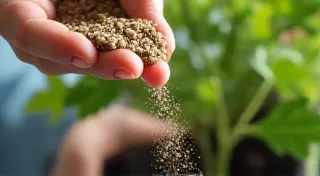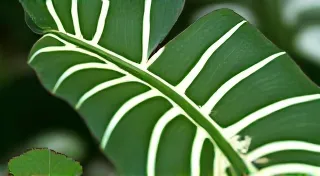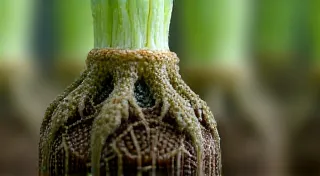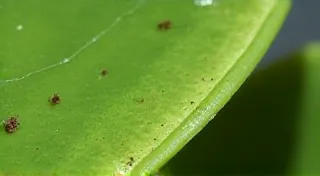Fertilizing Rare Houseplants: A Balanced Approach
Caring for rare houseplants often means going beyond the basics. While sunlight, water, and humidity are crucial, fertilization plays a critical role in ensuring your prized specimens thrive. But fertilizing rare houseplants isn't as simple as slinging on some generic plant food. These plants often have very specific needs, and an imbalanced approach can do more harm than good. This guide will walk you through the best fertilizing practices for your uncommon treasures.
Understanding Nutrient Needs
Rare houseplants often hail from unique ecosystems. Understanding where your plant originates can offer clues about its nutrient preferences. For example, epiphytic plants like Tillandsia (Air Plants) or Rafflesia may require different fertilization strategies than a soil-dwelling Monstera. Many rare plants are notoriously finicky, and their needs are easily overlooked. The care requirements of something like a Black Velvet Alocasia, for instance, highlight just how crucial specific nutrient balances can be. Generally, rare plants tend to be lighter feeders than common houseplants. Over-fertilization is a *far* more common problem than under-fertilization.
The macronutrients plants need most are Nitrogen (N), Phosphorus (P), and Potassium (K). Nitrogen promotes leafy growth, Phosphorus supports root development and flowering, and Potassium contributes to overall plant health and disease resistance. Micronutrients like iron, manganese, and zinc are also essential, but are generally needed in smaller quantities. Fertilizer labels display these ratios as N-P-K. For example, a 10-5-10 fertilizer contains 10% Nitrogen, 5% Phosphorus, and 10% Potassium.
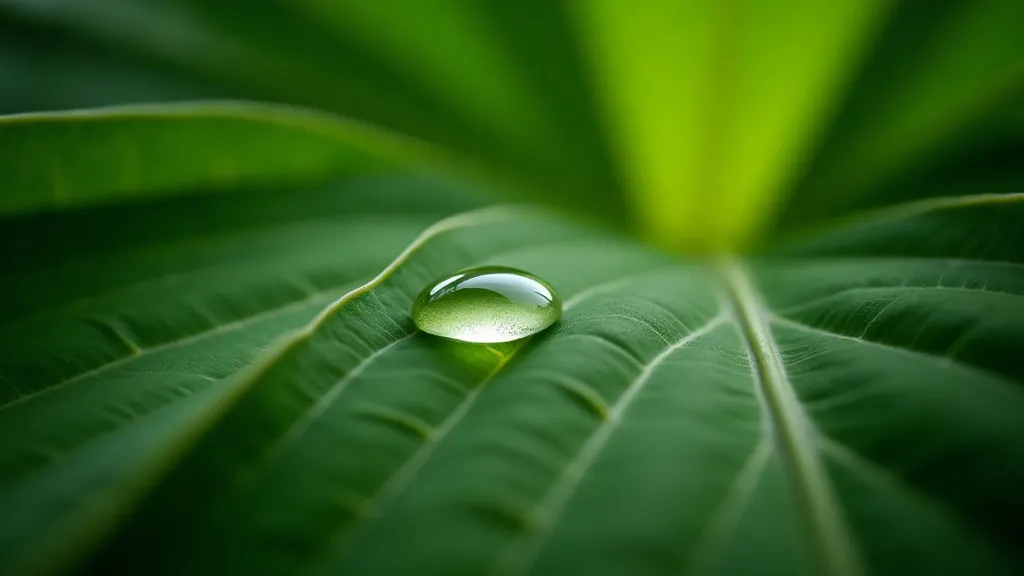
Choosing the Right Fertilizer
When selecting a fertilizer for your rare houseplants, consider these factors:
- Type: Liquid, granular, or slow-release fertilizers are available. Liquid fertilizers offer quick absorption and are easy to control. Granular and slow-release options provide a more consistent release of nutrients over time.
- Dilution: Always dilute fertilizer according to the manufacturer's instructions, and often even at half strength for rare plants. Less is almost always more! Many collectors swear by extremely diluted solutions.
- NPK Ratio: The ideal NPK ratio depends on the specific plant and its stage of growth. For plants focused on foliage, a higher Nitrogen ratio might be beneficial. For plants that are flowering or fruiting, a higher Phosphorus ratio may be more suitable. A balanced fertilizer (e.g., 10-10-10) is often a good starting point for general health. A plant like an Anthurium Crystallinum benefits greatly from a specific phosphorus-rich diet to encourage its unique crystalline structures. Understanding the intricacies of such specialized needs can be challenging, especially when dealing with plants known for their demanding care requirements.
- Organic vs. Synthetic: Organic fertilizers release nutrients more slowly and are generally gentler on plants. Synthetic fertilizers provide readily available nutrients but can be harsher.
Fertilizing Frequency & Timing
Rare houseplants generally don't need to be fertilized as often as common houseplants. Here's a general guideline, but always observe your plants for signs of nutrient deficiency or toxicity:
- Growing Season (Spring/Summer): Fertilize every 1-2 months.
- Dormant Season (Fall/Winter): Reduce or eliminate fertilization. Plants are typically not actively growing during this period.
Pay attention to your plant's signals. Yellowing leaves, stunted growth, or unusual leaf colors can indicate nutrient deficiencies or toxicities. Do your research on the specific needs of your plant to fine-tune your fertilizing schedule. Understanding the unique conditions required by a Moonlight Ficus, for instance, will dramatically alter your fertilization approach. Propagation can be especially tricky, and a wrong move can mean starting all over again. Even experienced growers can find themselves wrestling with propagation failures, which underlines the importance of understanding every stage of the process, including proper fertilization of the newly propagated cutting.
Common Mistakes to Avoid
- Over-fertilizing: The most common mistake! Can lead to salt buildup in the soil, root burn, and leaf damage. Symptoms can be difficult to distinguish from other issues.
- Ignoring the Water Quality: Tap water often contains chemicals that can interfere with nutrient uptake. Consider using filtered or distilled water.
- Fertilizing a Stressed Plant: Don't fertilize a plant that is already stressed from pests, disease, or environmental changes. Wait until the plant has recovered. Adding fertilizer to a compromised root system can be devastating.
- Applying Fertilizer to Dry Soil: Always water the plant thoroughly before applying fertilizer to prevent root burn. This is especially critical when dealing with sensitive species.
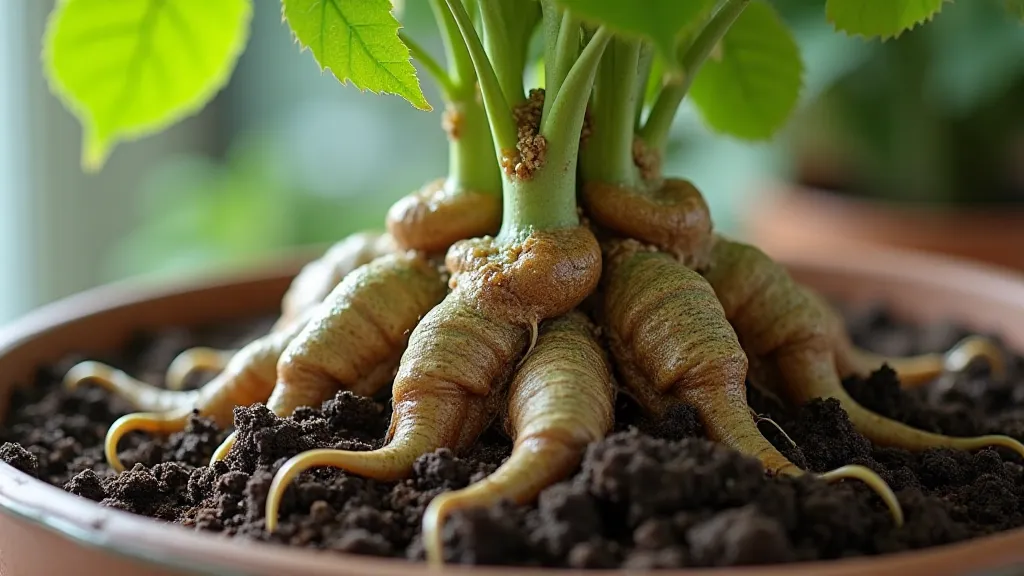
Propagation and Fertilizing
Newly propagated rare houseplants are particularly vulnerable. They have limited root systems and are relying on the nutrients stored in their leaves or rhizomes. Start with a very dilute fertilizer solution (1/4 strength or less) and apply sparingly after the plant has established a good root system. Organic fertilizers are often a good choice for newly propagated plants. Proper fertilization is paramount to ensuring the success of propagation. Many new growers are unaware that the correct fertilization approach can make the difference between survival and demise. The Begonia Maculata 'Red Moon' cutting, for example, requires a very specific nutrient profile to reveal its vibrant colors and encourage robust growth after propagation.

Beyond the Basics: Fine-Tuning Your Approach
The information above provides a solid foundation for fertilizing rare houseplants, but remember that each plant is unique. Consider factors like:
- Light Conditions: Plants receiving intense light may require more frequent fertilization than those in shadier locations.
- Soil Type: Well-draining, nutrient-poor soils will necessitate more frequent fertilization than richer, peat-based mixes.
- Humidity Levels: Higher humidity can increase nutrient uptake, potentially requiring adjustments to your fertilization schedule.
- Individual Plant Variation: Even within the same species, individual plants can have varying nutrient requirements. Observe your plants carefully and adjust accordingly.
Troubleshooting Common Issues
Even with the best intentions, problems can arise. Here's a quick guide to troubleshooting common fertilization-related issues:
- Leaf Burn: Indicates over-fertilization. Flush the soil with distilled water and reduce fertilizer strength.
- Yellowing Leaves: Can be a sign of nutrient deficiency (often nitrogen) or overwatering. Investigate further to determine the root cause.
- Stunted Growth: May indicate a lack of essential nutrients or root problems. Consider a balanced fertilizer and inspect the roots for signs of disease.
- Salt Buildup on Soil Surface: This white crust is a clear indication of excessive fertilizer use. Flush the soil with distilled water.
By understanding the principles outlined in this guide and diligently observing your plants, you can provide the balanced nutrition they need to thrive, showcasing their beauty and rarity for years to come.
